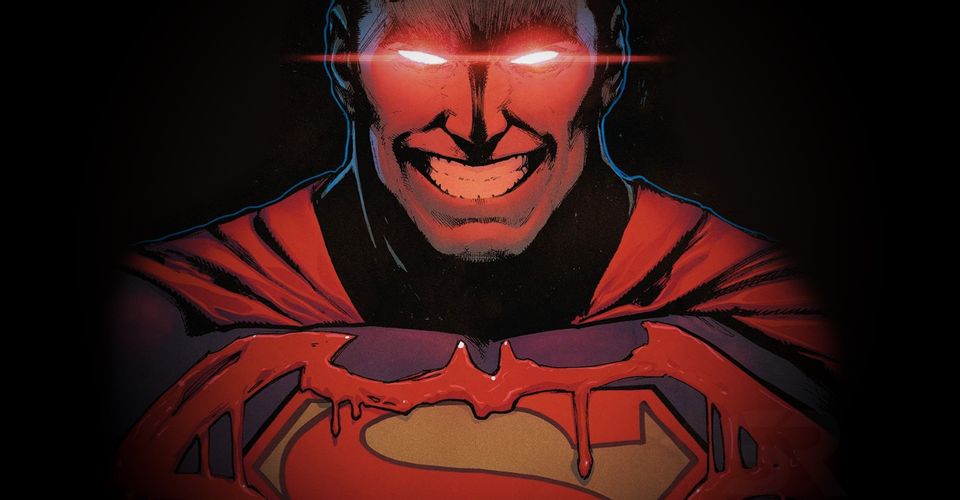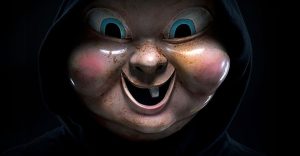Why Superman is Always Turning EVIL in DC Comics

While he may be viewed as a beacon of hope, Superman has a serious tendency for going off the deep end into darkness and villainy. Viewing morality in black and white can be a slippery slope, especially in comic books, which often forces Superman to become the very thing he hates. For a hero so against murder, how is it that Superman always turns evil?
Supes is criticized by many comic book fans for being a ‘boring’ boy scout, but while he totes truth and justice, he proves time and time again that he teeters on the edge of darkness just as much as the rest of his superhero cohorts (even if he doesn’t flaunt it like Batman). While morality is Superman’s most highly regarded trait, he is also shown to stray from his morals more than the average DC superhero. So let’s take a closer look at all the ways the Man of Steel has been brought to Lex Luthor levels of deception.

While Superman is weakened by Green Kryptonite, it’s not the only version of the rock that messes with the Man of Steel. Kryptonite is sometimes viewed as a lazy, predictable plot device, but even if it’s a simple idea it lends itself to a series of plotlines, opening up doors for exploring a myriad of social and ethical issues. In the original Action Comics, Red Kryptonite is created by Batman as a fail-safe to be used if Superman ever turns full ‘dark side.’ Unsurprisingly, in multiple iterations, it’s intercepted by villains to strip Superman of his powers–or overload them to the point of physical and emotional collapse.
The substance tends to have different side effects every time it’s used, making it a plot device for any situation. Smallville uses Red K to turn Clark into a rebellious Bad Boy. Instead of depleting his powers, Red Kryptonite strips Clark of his impulse control, affecting his normally strict sense of right and wrong. For a character whose emotions are just as heightened as his supersenses, that kind of empathy and emotional pain can be even more overbearing than superpowers. It’s not surprising that Clark would be tempted to use Red K to take a vacation from his emotions and carefully calculated personality.

While Clark’s Smallville High ring is the original culprit for his Red K descent into Bad Boy behavior, Clark becomes addicted to the actual high it gives him when he suffers heartbreak over Lana. Not being bogged down by his usual ethics seduces him — a formula often used when Clark tumbles down the rabbit hole of villainy.
When you heat up Green Kryptonite to extreme levels, Black Kryptonite is born. Black K strips Supes into two versions of himself: one “good” and one “evil.” But the truth is, everyone has both light and dark inside. And for Superman, as much as anyone, one’s identity depends on both. The ability to rip Superman into two parts of himself, bringing forth the best and worst qualities of the hero, gives readers an undiluted glimpse into the worst parts of Superman that he tries to tamp down. It’s a lot easier to understand how Superman could possibly become evil when the worst parts of himself (that he usually hides) are brought to the surface.
Superman Gets Around the Multiverse

Along with stories, the DC Universe runs on alternate realities. With characters spanning decades and existing in multiple generations, it’s easy for plotlines to get stale. Like Black K, alternate universes allow comics to warp the characters we know, giving them the opportunity to fight darker versions of themselves. Superman is the perfect character study on nature vs. nurture: what would happen if Clark, wrought with superpowers, remained orphaned? What if he grew up in a family like the Luthors, instead of the picturesque Kent family?
The film Brightburn explores the possibility of a much darker origin story for a character like Clark. Being the odd one out lends itself to a path of darkness and vengeance — and alternate realities give readers and writers a chance to explore what could have been for the boy who lost his entire planet. If Clark never fell in love with Earth and humanity… chances are he’d want to destroy it.
Within the comics themselves, 1998’s Superman: The Dark Side plays out a dark origin story, changing the course of Clark Kent’s life and humanity. Instead of his rocket crashing on Earth, Kal-El crashes on the subtly-named planet, Apokolips. Darkseid, the planet’s ruler, is one of DC Comics’ most notoriously brutal villains. Being raised in his hellscape would be enough to turn anyone dark. Clark is raised as a cog in Darkseid’s villainous machine where he commits large-scale acts of violence like destroying the peaceful planet, New Genesis.

Superman does eventually find his way to Earth, and as a result, regains a bit of his humanity. The arc of finding who you were meant to be is an interesting one that isn’t always explored in comics when characters are given “Elseworld” origin stories. That’s not to say that Superman isn’t affected by his brutal origin story. Gone is his staunch morality we’ve come to know, replaced by wavering morals and fierce brutality — even when he’s trying to do the right thing.
2003’s Superman: Red Son takes a similar approach, thrusting baby Kal-El into Soviet Ukraine and adding a superhuman twist to the Cold War. This icy Superman never seems to find himself yearning for the superhero life, content to continue on with his bad self. No matter how often it’s done, fans can’t seem to get enough of the “what if” plotlines that throw Supes into an alternate universe where he never knew the loving embrace of the Kents. As long as fans keep craving it, writers will continue to toss Dark Superman into these scenarios.
Twisting Love Into Torture

Tightly wound characters like Superman are prone to snapping by pushing the right buttons. In most cases, it’s loved ones. In Injustice: Gods Among Us, the Joker tricks Superman into killing Lois and their unborn child. Superman twists into a dark, demented version of himself when he realizes what he’s done. Tossing away his aversion to killing, he avenges his family when he puts his entire fist through the Joker, effectively killing him. Instead of saving humanity, he seeks to rule it after he decides that he’s been far too nice to criminals.
Superman commits a laundry list of horrific acts in Gods Among Us. Some of the highlights include lighting Martian Manhunter on fire with his heat vision, killing Green Arrow with his fists of steel, taking out Alfred, revealing Bruce Wayne’s identity, and breaking Batman’s spine. Superman would undoubtedly be kicked out of the boy scouts for this behavior. It’s the job of a good villain to infect a superhero with their evil by picking apart their humanity and destroying what they hold dear. For characters ruled by morality, their loved ones are usually at the forefront of their humanity. When those people are taken away, the compass loses its bearings and along with it, the characters lose everything that tethered them to their “goodness.” With a character like Superman, whose humanity is so heavily ingrained by those around him, this is an eventuality he faces more often than not — and one that puts him on the path of darkness so frequently.
Superman’s Not-So-Frilly History

Like Batman, the Superman symbol didn’t mean hope when the hero was first introduced. In the Silver Age, Superman was a LOT more violent than he’s depicted these days. Now, there usually has to be a reason for Superman to descend into the darker visages of his personality. Back then, his personality was dark. It’s not like he was full-on villainous, but he bent the laws of his morality a lot more than he does today. He’s especially cruel to Lois Lane on numerous occasions (which could be chalked up to social norms around the ’50s if you want to take the easy way out). Not only does he show a much more muddled sense of right and wrong, he seems to get a small sense of enjoyment over others’ pain. He can be seen laughing frequently at the misfortune of other heroes and civilians, even when he causes their suffering himself.
People view Superman as turning evil so frequently because fans (and critics) have a tendency to put his best traits on a silver platter and forget that his darker parts exist. Superman is a beacon of hope in the darkest times because he’s not perfect, not because he is perfect. Sups has dark urges (that he sometimes follows through on) just like everyone else — but what he does with them defines him. He usually finds his way back to himself.
—
Superman is the ‘Man of Steel,’ but Clark Kent’s heart is made of glass. His deep trust in humanity and high capacity to love make him an easy target for manipulation and corruption. It’s a lot easier to warp a character like that than someone with a hardened heart. No one wants to watch a character be good all of the time. Let’s face it: who doesn’t want to see “the good guy” go dark every once in a while?

















